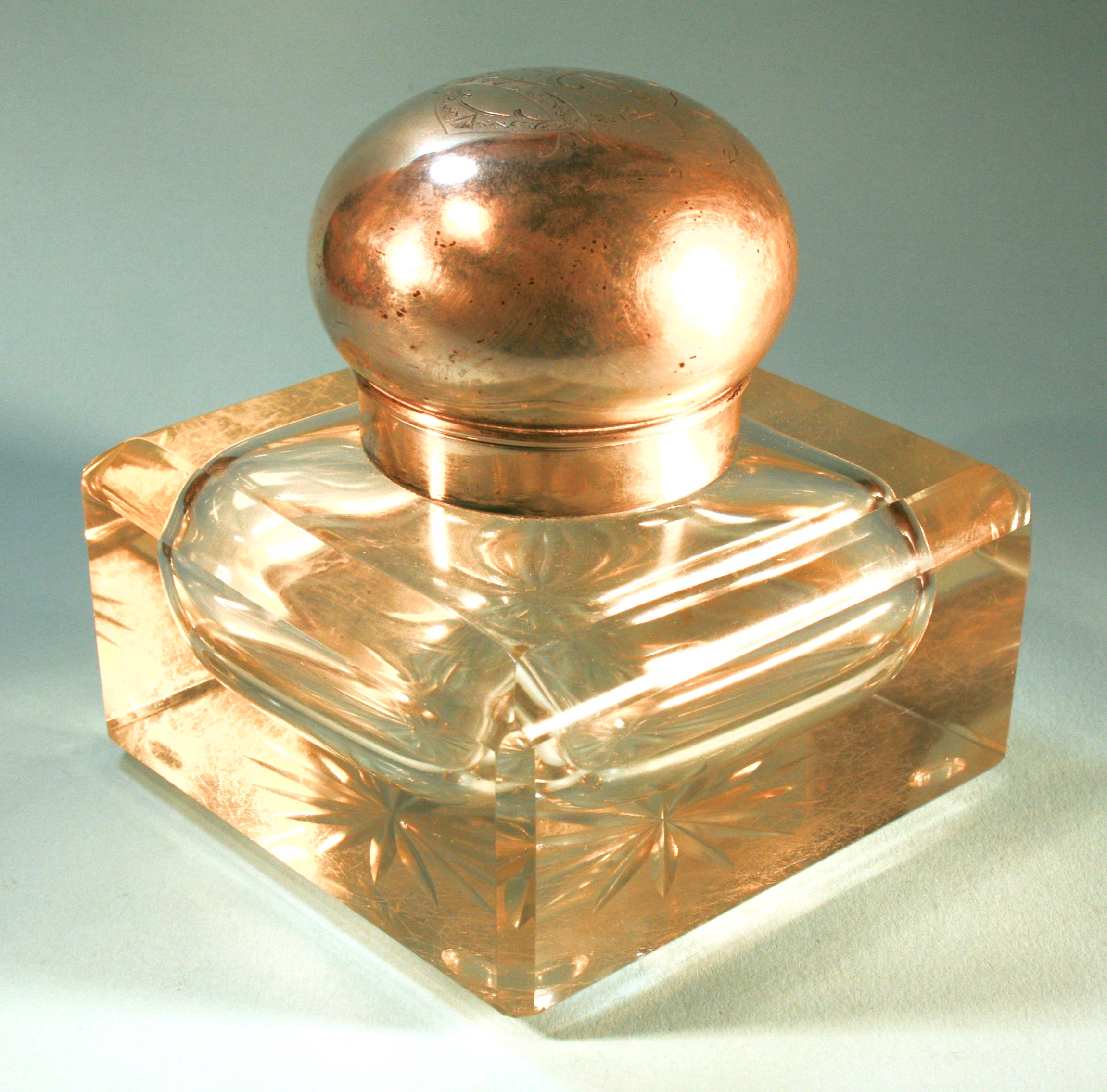

Title: Large Victorian Silver and Crystal Glass Desk Inkwell
Shipping: $29.00
Artist: N/A
Period: 19th Century
History: N/A
Origin: North America > United States
Condition: N/A
Item Date: N/A
Item ID: 9998
A spectacular large Victorian silver and crystal glass inkwell. An inkwell is a small jar or container, often made of glass, porcelain, silver, brass, or pewter, used for holding ink in a place convenient for the person who is writing. The artist or writer dips the brush, quill, or dip the pen into the inkwell as needed or uses the inkwell as the source for filling the reservoir of a fountain pen. An inkwell usually has a lid to prevent contamination, evaporation, accidental spillage, and excessive exposure to air. A type known as the traveling inkwell was fitted with a secure, screw lid so a traveler could carry a supply of ink in their luggage without the risk of leakage. Inkwells gradually fell out of use in the early part of the 20th century. as the reservoir fountain pen (which needs to be filled only occasionally) replaced the dip pen, which needed to be dipped in ink after writing a few lines. Old school desks had round holes for inkwells.
Woods and Woods (2000) state that the process of making India ink was known in China as early as the middle of the 3rd millennium BC, in Neolithic China, whereas Needham (1985) states that inkmaking commenced perhaps as early as three millennia ago in China. India ink was first invented in China, but the English term India(n) ink was coined due to their later trade with India. A considerable number of oracle bones of the late Shang dynasty contain incised characters with black pigment from a carbonaceous material identified as ink. Numerous documents written in ink on precious stones as well as bamboo or wooden tablets dating to the Spring and Autumn, Warring States, and Qin period have been uncovered. A cylindrical artifact made from black ink has been found in Qin tombs, dating back to the 3rd century BC during the Warring States or dynastic period, from Yunmeng, Hubei. India ink has been in use in India since at least the 4th century BC, where it was called masi, an admixture of several substances. Indian documents written in Kharosthi with this ink have been unearthed in as far as Xinjiang, China. The practice of writing with ink and a sharp-pointed needle in Tamil and other Dravidian languages was common practice from antiquity in South India, and so several ancient Buddhist and Jain scripts in India were compiled in ink. In India, the carbon black from which India ink is formulated was obtained indigenously by burning bones, tar, pitch, and other substances.
Link: https://en.wikipedia.org/wiki/Inkwell
The inkwell's origins may be traced back to Ancient Egypt where scribes would write on papyrus. Knowledge of hieroglyphics was at the time highly restricted. Only scribes knew the full array of hieroglyphs and would write on the behalf of their employers, usually the pharaoh. After Rome invaded Egypt, inkwells became more popular in Italy as a larger percentage of the population were capable of writing.